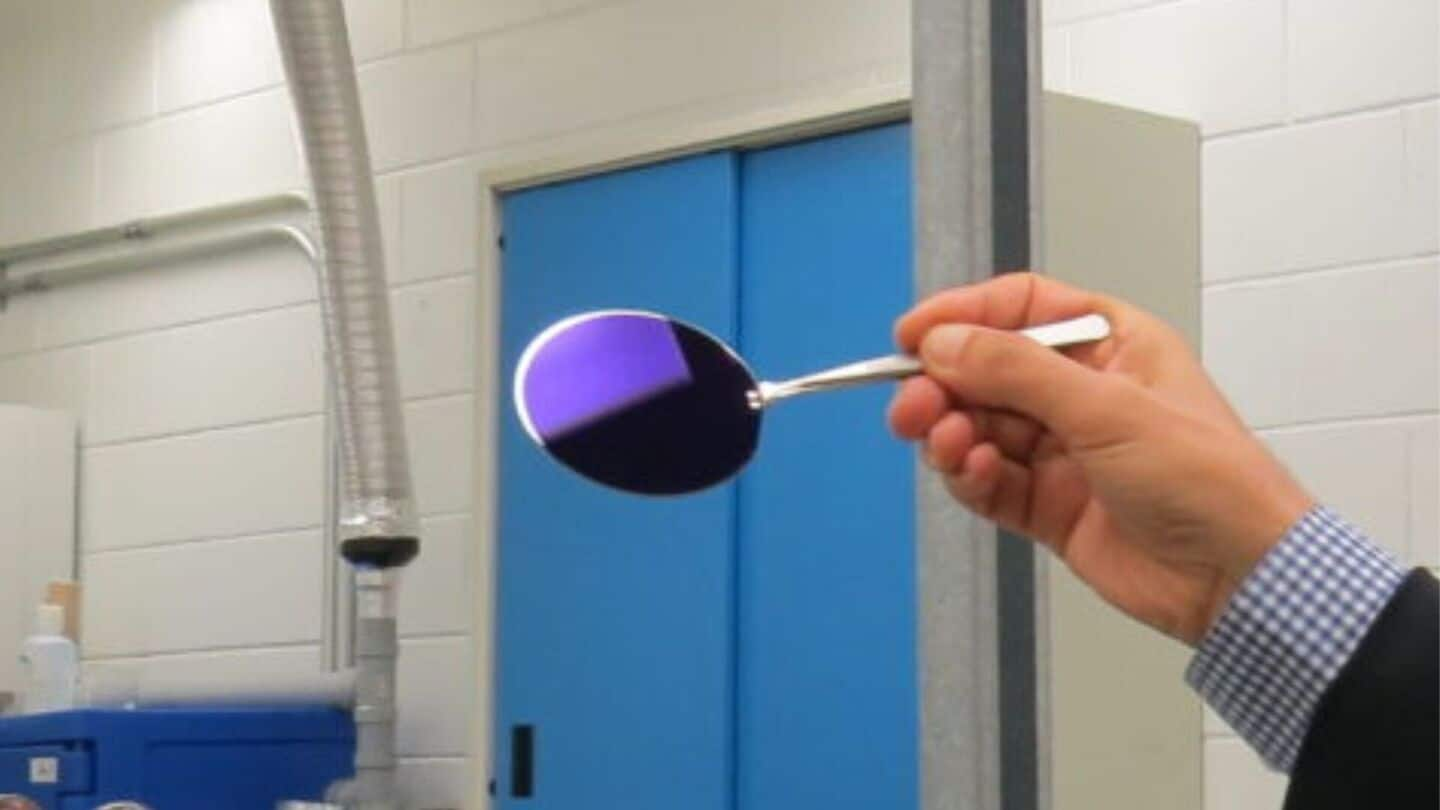
New material converts sunlight into heat, boosts energy efficiency
What's the story
In a major breakthrough in solar energy technology, scientists have developed a unique material that can directly convert sunlight into heat with remarkable efficiency.
The focus of this innovation is on thin films of a specific titanium oxide phase called Ti₄O₇.
This advancement could revolutionize a range of sectors from energy-efficient buildings and clean water supply to sustainable fuel production.
Innovative application
A game-changing approach for passive desalination
The research team, led by Professor My Ali El Khakani, has shown the possibility of using this material for passive desalination.
"The ability to create thin photothermal coatings on reasonably sized surfaces holds particular promise for passive desalination in niche applications," El Khakani said.
He noted that this method only uses direct sunlight and doesn't require any external electrical energy input, unlike the widely used reverse osmosis process.
Production hurdles
Overcoming challenges in Ti₄O₇ production
The research team at the Institut national de la recherche scientifique (INRS) focused on addressing the challenges of conventional methods of producing Ti₄O₇.
Loick Pichon, a PhD student at INRS, noted that these methods often produced mixed phases and restricted the material's potential, especially its electrical conductivity.
Consequently, its usable form was limited to small pellets.
Innovative technique
Magnetron sputtering: A solution for Ti₄O₇ production
To overcome these challenges, Professor El Khakani's team employed magnetron sputtering, a thin film deposition technique commonly used in the semiconductor industry.
Using this plasma deposition technique, they deposited Ti₄O₇ coatings, only a few hundred nanometers thick, onto different substrates like metal, silicon, and glass.
Professor El Khakani noted that this method completely changes the surface properties of the substrate.
Practical applications
Thin photothermal coatings: A new frontier
The development of these thin photothermal coatings using Ti₄O₇ opens a whole new range of practical applications.
The team said, "Ti₄O₇ coatings will be used to manufacture high-performance anodes for the decontamination of water containing persistent pollutants."
"The material's natural corrosion resistance and high electrical conductivity also make it ideal for producing high-performance anodes that can effectively remove persistent pollutants from water."
Multifaceted applications
Versatile solution for energy efficiency
Not just water decontamination, the Ti₄O₇ material could also be extremely useful in producing hydrogen and ammonia.
"With its exceptional photothermal conversion capacity, this type of coating is also relevant for manufacturing smart heating windows, a significant asset in terms of economy and energy efficiency," the team added.
Professor El Khakani concluded their work has made a major contribution by establishing the fundamental relationship between optical absorbance capacity of Ti₄O₇ films and their photoconversion efficiency.